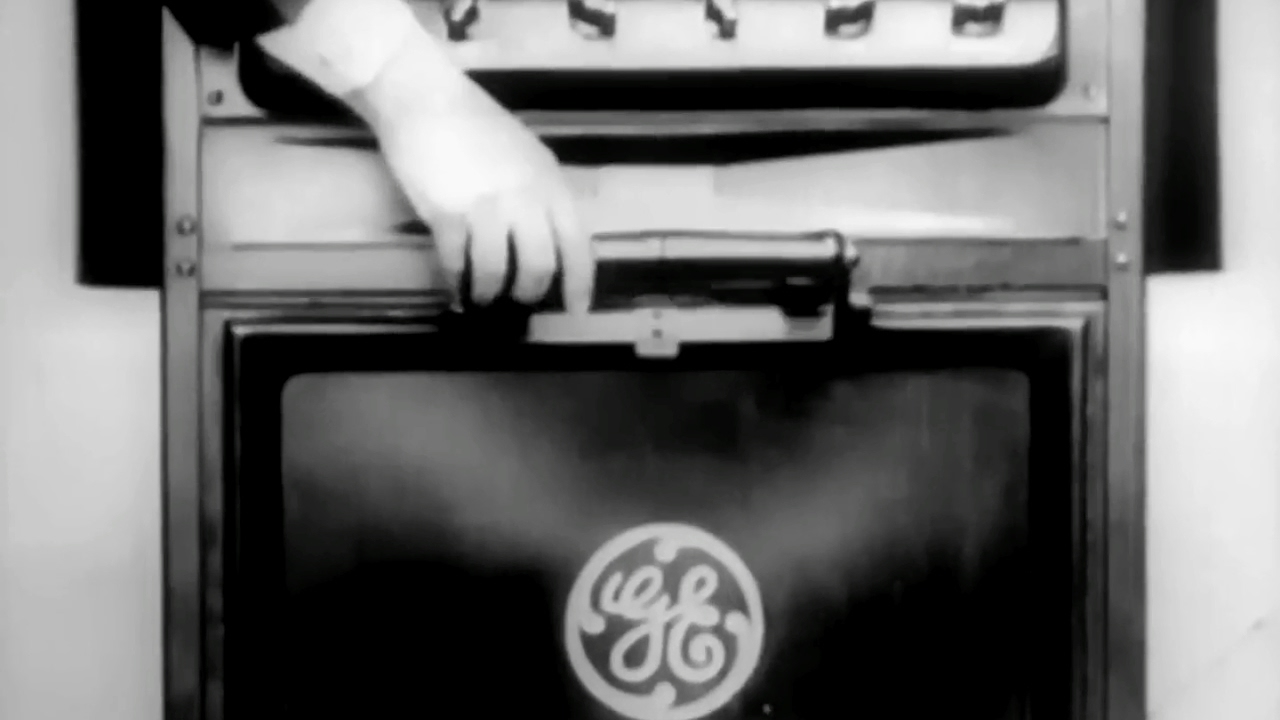Miscellaneous Technology playlist:
American History, US HIstory, United States History Playlist:
more at
Reupload of a previously uploaded film with improved video & sound.
Public domain film from the Library of Congress Prelinger Archives, slightly cropped to remove uneven edges, with the aspect ratio corrected, and one-pass brightness-contrast-color correction & mild video noise reduction applied.
The soundtrack was also processed with volume normalization, noise reduction, clipping reduction, and/or equalization (the resulting sound, though not perfect, is far less noisy than the original).
General Electric Company, or GE (NYSE: GE), is an American multinational conglomerate corporation incorporated in Schenectady, New York and headquartered in Fairfield, Connecticut, United States. The company operates through four segments: Energy, Technology Infrastructure, Capital Finance and Consumer & Industrial.
In 2011, GE ranked among the Fortune 500 as the 6th largest firm in the U.S. by gross revenue, as well as the 14th most profitable. However, the company is currently listed the 3rd largest in the world among the Forbes Global 2000, further metrics being taken into account…
Formation
By 1890, J.P. Morgan had brought together several of his business interests under one corporation to form Edison General Electric. At about the same time, Charles Coffin, leading Thomson-Houston Electric Company, acquired a number of competitors and gained access to their key patents.
General Electric was formed by the 1892 merger of General Electric of Schenectady, New York and Thomson-Houston Electric Company of Lynn, Massachusetts. Both plants continue to operate under the GE banner to this day. The company was incorporated in New York, with the Schenectady plant used as headquarters for many years thereafter. Around the same time, General Electric’s Canadian counterpart, Canadian General Electric, was formed.
Public company
In 1896, General Electric was one of the original 12 companies listed on the newly formed Dow Jones Industrial Average. After 116 years, it is the only one of the original companies still listed on the Dow index, although it has not been on the DOW index continuously…
An incandescent light bulb, incandescent lamp or incandescent light globe is an electric light which produces light with a filament wire heated to a high temperature by an electric current passing through it, until it glows (see Incandescence). The hot filament is protected from oxidation with a glass bulb that is filled with inert gas (or evacuated)…
History of the light bulb
In 1840, British Astronomer and Chemist, Warren de la Rue, enclosed a platinum coil in a vacuum tube and passed an electric current through it, thus creating the world’s first light bulb — a full 40 years before Edison was issued a patent for creating it .
In addressing the question of who invented the incandescent lamp, historians Robert Friedel and Paul Israel list 22 inventors of incandescent lamps prior to Joseph Swan and Thomas Edison. They conclude that Edison’s version was able to outstrip the others because of a combination of three factors: an effective incandescent material, a higher vacuum than others were able to achieve (by use of the Sprengel pump) and a high resistance that made power distribution from a centralized source economically viable…
In 1802, Humphry Davy had what was then the most powerful electrical battery in the world at the Royal Institution of Great Britain. In that year, he created the first incandescent light by passing the current through a thin strip of platinum, chosen because the metal had an extremely high melting point. It was not bright enough nor did it last long enough to be practical…
Thomas Edison began serious research into developing a practical incandescent lamp in 1878. Edison filed his first patent application for “Improvement In Electric Lights” on 14 October 1878. After many experiments with platinum and other metal filaments, Edison returned to a carbon filament. The first successful test was on 22 October 1879, and lasted 13.5 hours. Edison continued to improve this design and by 4 November 1879, filed for a US patent for an electric lamp using “a carbon filament or strip coiled and connected … to platina contact wires.” Although the patent described several ways of creating the carbon filament including using “cotton and linen thread, wood splints, papers coiled in various ways,” Edison and his team later discovered that a carbonized bamboo filament could last over 1200 hours…

